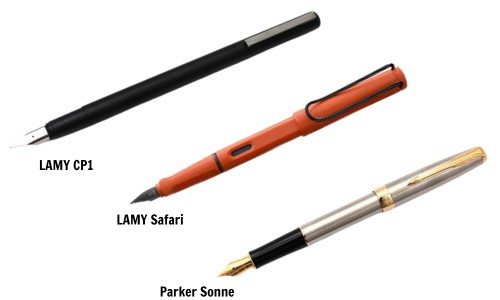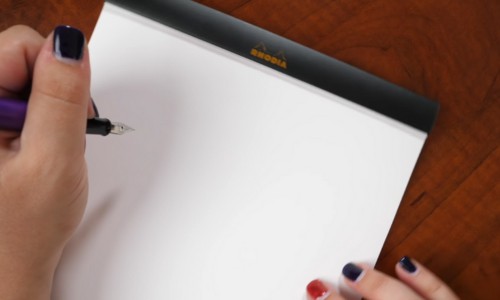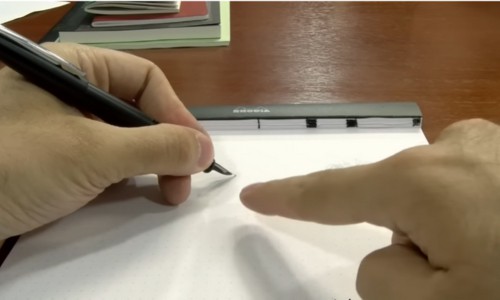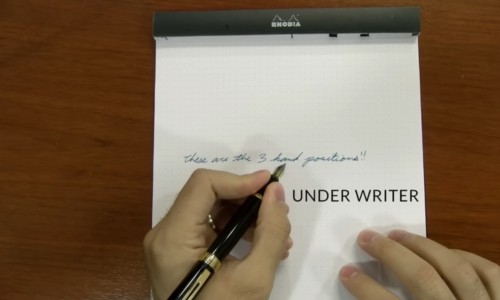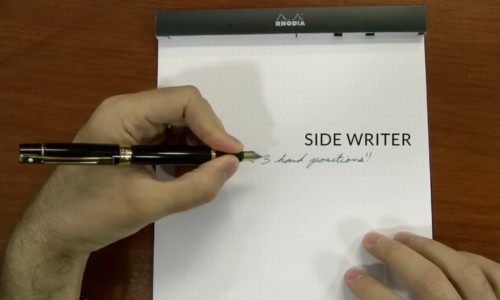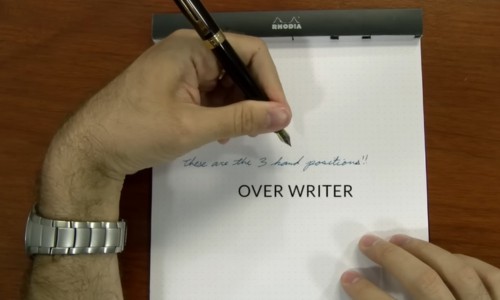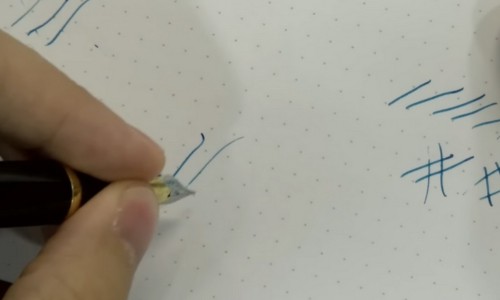Many lefties shy away from fountain pens, fearing discomfort or smudged ink. But fear not! Our guide on how to use a fountain pen left-handed should help you with the common challenges you may encounter while familiarizing yourself with the writing tool.
And let’s get this out of the way: while specialized left-handed fountain pens exist, most standard fountain pens nowadays are designed for both left- and right-handed writers. As such, if you have trouble with ink flow, the issue is likely due to your technique.
Table of Contents
Ways to Use a Fountain Pen Left-handed
It’s hard to find no smudge fountain pens, but there are tips for left-handers to reduce the chances of smearing and enhance the overall writing experience. Here’s how!
Step 1: Choose the Right Fountain Pen
As mentioned above, there’s really no need to get specialized fountain pens for lefties, considering these pen nibs can now accommodate both left- and right-handed writers.
That said, if you insist on getting a lefty fountain pen anyway, below are a few recommendations. These are specifically designed pens for left-handed writers, providing a comfortable grip and smooth ink flow, which reduces the chances of smudging.
- LAMY Safari
- Parker Sonne
- LAMY CP1
What I’d encourage you to pay more attention to is the weight and balance of the pen. It shouldn’t feel overly hefty or light in your hand, which can lead to cramps or an awkward writing experience. Plus, the pen should feel balanced—not too heavy on one end or the other.
Step 2: Adjust the Paper Position
To improvise visibility and help maintain control without smudging, you need to place the paper on the left side of your body, with the top of the paper slightly leaning toward the right.
Step 3: Hold the Pen Properly
When it comes to using fountain pens, calligraphy pens, or any other type of pen as a left-handed writer, it’s important to establish a comfortable and practical grip.
- The correct way to hold a fountain pen would be to slightly grip it with your pointer finger and thumb while letting the writing tool rest on the middle finger’s first knuckle. This is called the tripod grip.
- Position the pen so that its nib makes a 45-degree angle with the paper, which ensures smooth and consistent ink flow.
- Keep in mind that the pen’s nib should always be facing up, whereas its feed should be facing down.
Step 4: Hand Position
Hand position refers to how your hand relates to the line that you’re writing. There are three different positions:
- Underwriter: This is when your hand is positioned below the writing line. This is the easiest way to write with a fountain pen, as it prevents your hand from smudging the ink and allows you to see what you are writing clearly.
- Sidewriter: This is when your hand is positioned on the same level as the writing line. This position can be easy to smear your writing, so you’ll need to use a specialized quick-drying ink.
- Overwriter/Hook-handed writer: This is when your hand is positioned above the writing line. This position can be challenging to write with a fountain pen, as it can cause ink flow problems and scratchy writing.
One more tip! You can use your right hand to stabilize the paper to prevent it from moving or sliding while you write. A steady paper surface is crucial for optimal performance when using a left-handed fountain pen.
Step 5: Apply Light Pressure
Instead of pushing the pen, try pulling it across the paper with light and consistent pressure. This technique helps avoid scratching the nib and preventing the ink from flowing excessively.
Focus on controlled movements while guiding the pen across the paper. Use your arm and shoulder muscles rather than relying solely on your wrist and fingers. This will also keep your writing hand from tiring out quickly.
Conclusion
Mastering how to use a fountain pen left-handed opens the door to a rewarding writing experience. By choosing a suitable pen and adopting the right techniques, you can achieve effortless strokes and smooth ink flow.
Remember to hold the pen with a relaxed grip, position your hand below the writing line, and use your non-writing hand to steady the paper. Pull the pen across the page, avoiding scratching the nib, and explore different grips to find what feels most comfortable.
With practice and dedication, you’ll confidently navigate the art of using a fountain pen left-handed, creating elegant and impeccable writing.

Art has always been a part of my life; it influences my upbringing and later my career choice. For me, it is always a part of my parenting technique. So for whichever purpose that you come to art, you can start here with us.

